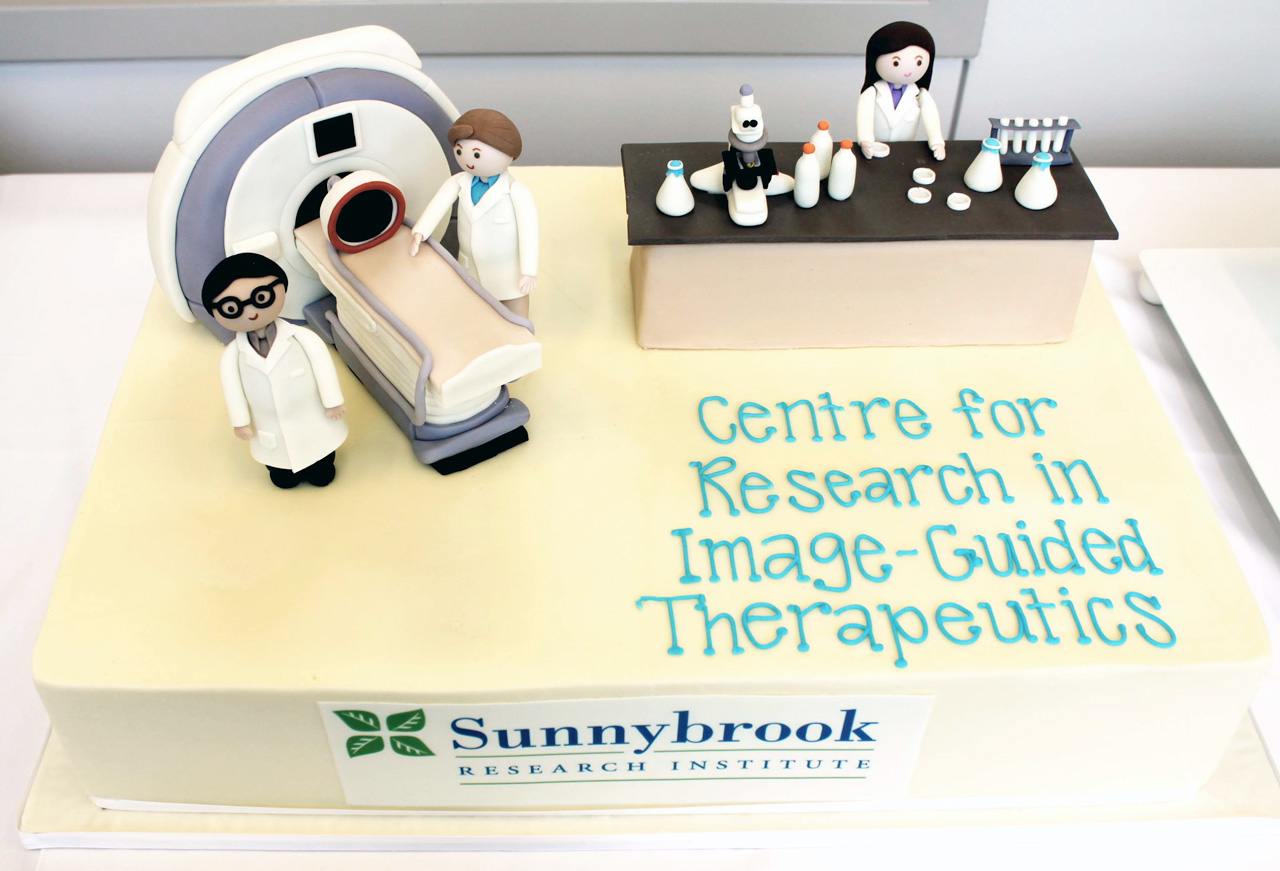Open: the Centre for Research in Image-Guided Therapeutics
By Stephanie Roberts
On Nov. 2, Governor General David Johnston opened the Centre for Research in Image-Guided Therapeutics at Sunnybrook Research Institute (SRI).
"Today is a great day for health care in Canada, which makes it a great day for Canadians and, in fact, for people from around the world, who will benefit from the work that goes on here," said His Excellency, speaking to more than 100 anticipatory attendees.
The day had been keenly awaited since the Canada Foundation for Innovation (CFI) announced in 2008 that SRI was one of only eight institutions in the country to be successful in its bid for a Research Hospital Fund award—probably the hottest-fought grant competition in health research in 2007.
The roughly 150,000 square feet of the Centre for Research in Image-Guided Therapeutics, or CeRIGT, is a two-floor expansion of the hospital's main wing, with additional facilities located in other wings.
Dr. Michael Julius, vice-president of research at Sunnybrook and SRI, spoke to the essence of the $160-million centre. "While the space is beautiful, it's what our researchers are making happen inside that really matters."
Dr. Barry McLellan, president and CEO of Sunnybrook, and Julius presented a plaque to Dr. Gilles Patry, president and CEO of the CFI, to thank the CFI for its $75-million investment. Other funding comes from industry contributions, other grants, including from the province, and donations.
Dr. Kullervo Hynynen, director of physical sciences and lead of CeRIGT, talked about the benefits of the centre, including for youth. "It also means we can catch the attention of the best trainees and young people, so that we can prepare another generation to do what we do." He presented an award in honour of the occasion, naming Sharon Yeung as recipient of the Focused Ultrasound Research Project Award of Excellence.
After the ceremony, the Governor General and his wife Mrs. Sharon Johnston, along with Patry, were whisked away on a whirlwind tour of some of the labs of CeRIGT, with media trailing close behind.
In the neurointervention centre, Their Excellencies tried their feet at the walking track, which Dr. Sandra Black, director of SRI's Brain Sciences Research Program, and colleagues are using to understand normative patterns of gait, and to help people relearn how to walk after stroke.
One floor up, Their Excellencies were treated to a demonstration of the device development lab's waterjet cutter in all its spritzing glory. This machine can cut any substance, and is used to make parts for medical devices at SRI. His Excellency pressed the start button to launch the machine, and received an aluminum SRI token in return.
Down the hall, Dr. David Andrews, director of biological sciences at SRI, then demonstrated the Opera system, an automated high-content screening microscope that can take 100,000 pictures a day without anyone being there. Andrews is using the system in his work on cell death, but it is available to all scientists at SRI.
A mere five minutes later, Dr. Charles Cunningham, a researcher in physical sciences, and colleague Dr. William Dominguez-Viqueira, were showing Their Excellencies how to assemble a catheter they've invented to help cardiologists see inside blocked blood vessels of the heart while the patient is in a magnetic resonance scanner. His Excellency called it "impressive."
Crowning the tour was a visit to a tissue culture room in the lab of Dr. Juan Carlos Zúñiga-Pflücker, senior scientist in biological sciences, who spoke about his research on using T cells toward regenerating a devastated immune system.
As Their Excellencies and Patry left, the other invited guests, hailing from industry, government, academia, research and philanthropia, poured into the space, after having enjoyed a reception anchored by a custom cake depicting CeRIGT in three dimensions.
More than 50 interactive activities were set up across 16 labs and facilities, for anyone game to try such larks as purifying a protein, using ultraviolet light to identify a contaminated clay steak, "diagnosing" disease using image-processing software, or pushing a catheter through a machine to measure its torque and resistance.
Although the activities were fun, they were not born of frivolity. They were designed to help people, namely those without PhDs in physics or biology, experience and understand the science of the centre. Even smashing pink and white carnations dipped and frozen in liquid nitrogen had an aim: to help those unacquainted with basic science principles understand why biologists cryopreserve cells.
The same activities were experienced by the afternoon attendees, staff from Sunnybrook and the wider community. To learn more about CeRIGT, including its research facilities, which are open to all at SRI, and opportunities for collaboration, visit sunnybrook.ca/research/cerigt.



